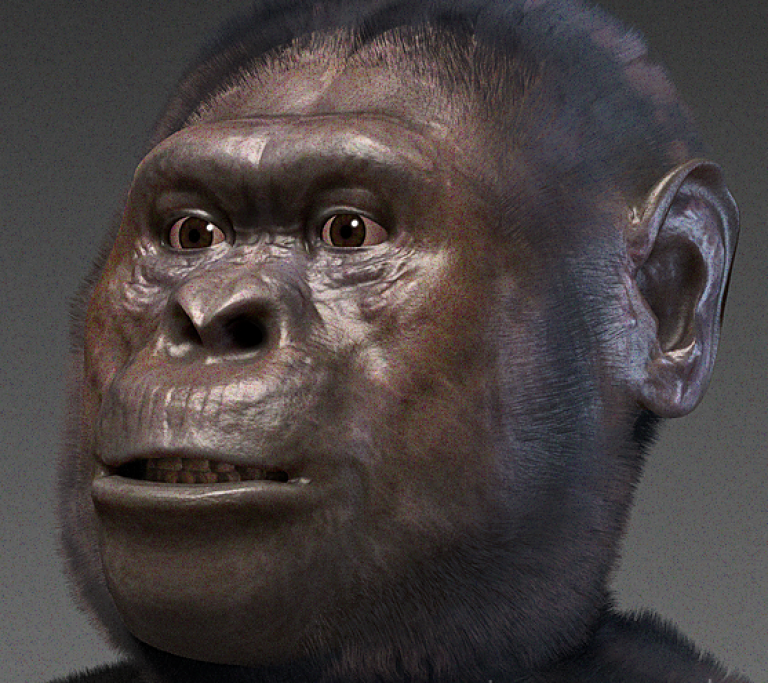A rigid foot in hominins could represent a conserved trait
9 December 2021
In 2000, a complete fourth metatarsal (Mt4) of the ∼3- to 4-Million-year-old hominin Australopithecus afarensis was recovered in Hadar, Ethiopia.

This metatarsal presented a mostly human-like morphology, suggesting that a rigid lateral foot may have evolved as early as ∼3.2 Ma. The lateral foot is integral in providing stability during the push off phase of gait and is key in understanding the transition to upright, striding bipedalism. Previous comparisons of this fossil were limited to Pan troglodytes, Gorilla gorilla, and modern humans. This study builds on previous studies by contextualizing the Mt4 morphology of A. afarensis (A.L. 333-160) within a diverse comparative sample of nonhuman hominoids (n = 144) and cercopithecids (n = 138) and incorporates other early hominins (n = 3) and fossil hominoids that precede the Pan-Homo split (n = 4) to better assess the polarity of changes in lateral foot morphology surrounding this divergence. We investigate seven morphological features argued to be functionally linked to human-like bipedalism. Our results show that some human-like characters used to assess midfoot and lateral foot stiffness in the hominin fossil record are present in our Miocene ape sample as well as in living cercopithecids. Furthermore, modern nonhuman hominoids can be generally distinguished from other species in most metrics. These results suggest that the possession of a rigid foot in hominins could represent a conserved trait, whereas the specialized pedal grasping mechanics of extant apes may be more derived, in which case some traits often used to infer bipedal locomotion in early hominins may, instead, reflect a lower reliance on pedal grasping. Another possibility is that early hominins reverted from modern ape Mt4 morphology into a more plesiomorphic condition when terrestrial bipedality became a dominant behavior. More fossils dating around the Pan-Homo divergence time are necessary to test these competing hypotheses.
Alisha Anaya, Biren A. Patel, Caley M. Orre, Carol V. Ward, Sergio Almécija
 Close
Close

